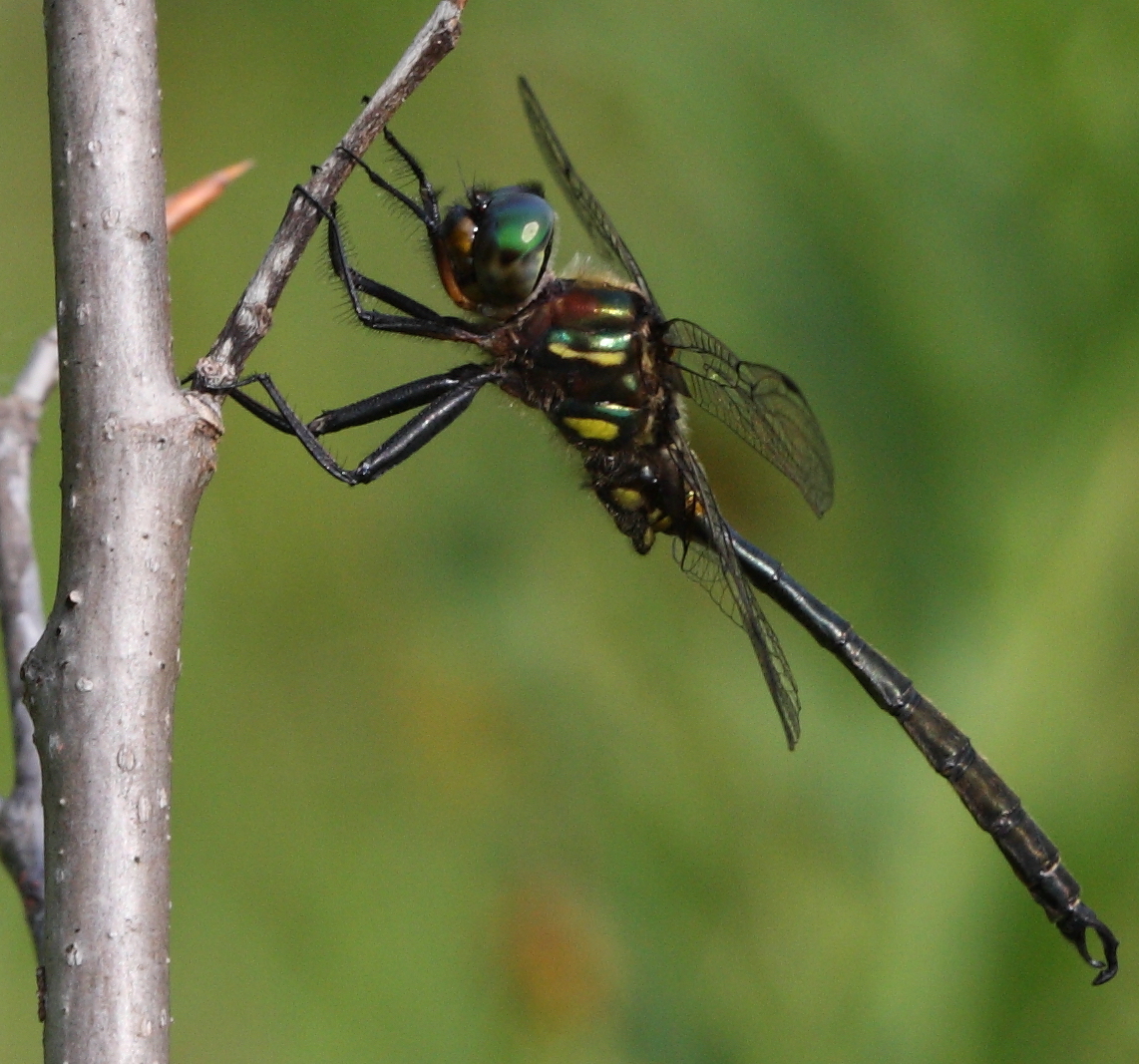Action Alert: tell Feds to expand scope of Hine’s Emerald Dragonfly recovery strategy

Hine’s Emerald Dragonfly – Chris Evans photo
Update October 1 2019 – link to Chris Evans submission. Even though it is past the consultation deadline of September 30 2019 set by Canada Wildlife Services, you may still contact them to express concern, and let your elected representatives you care about this dragonfly, discovered for the first time in Canada 12 years ago, and in danger of being lost after surviving so long under our radar screen. Especially, share your views with elected representatives on the Nottawasaga Valley Conservation Association.
By Kate Harries AWARE News Network
There’s only a day left in the federal government’s consultation process regarding its recovery strategy for the Hine’s Emerald Dragonfly, a unique and beautiful dragonfly that has seen its habitat in Canada shrink to the confines of the Minesing Wetlands making us, the residents of Simcoe County, its stewards. For better or worse.
Our apologies for not letting you know sooner about this process. We urge you to let Canada Wildlife Services know that the survival of the endangered Hine’s Emerald Dragonfly matters to you and ask that they expand the consultation to all of the Nottawasaga Valley, as proposed by naturalist Chris Evans of Midhurst.
See this notification Environment and Climate Change letter Hine_s Emerald that was provided to local municipalities and landowners in the vicinity of the Minesing Wetlands.
Canada Wildlife Services has taken the position that it only needs to do a focused outreach for comments from landowners in the immediate vicinity of the Minesing Wetlands because the Federal Recovery Strategy assessed the species as “historically precarious.”
That assessment is incorrect, in the opinion of Chris Evans, the naturalist who found the dragonfly in the Minesing Wetlands in 2007, and played a leading role in gathering the evidence to get the Hine’s Emerald listed as endangered federally in 2011 and provincially in 2012.
The “historically precarious” assessment is based on the view that the dragonfly existed in fewer than five locations beyond the 20-km2 identified area of occupancy prior to significant effects from human settlement. Evans notes that no evidence is produced to support this view and rejects it.
He explains: “The primary threat to the Hine’s Emerald is human development activity, which began in earnest in southern Ontario in 1800. So by the time Hine’s Emerald was first described to science in 1931, a significant portion of the wetlands in southern Ontario had been lost to direct or indirect negative impacts of human activities.”
The assessment is consequential because it downgrades both the consultation and response required of the federal government, limiting the recovery efforts to the immediate vicinity of the Minesing Wetlands. “If my arguments are accepted and substantiated, the SAR (Species at Risk) Policy 2016 directs that the FRS be significantly revised because this “first step” is currently incorrect,” Evans says.
He urges that the Federal Recovery Strategy be revised to encompass at least all of the Nottawasaga Valley watershed and likely all of the adjacent watersheds.
“The plight of the Hine’s Emerald informs us we are destroying the world in ways we do not yet understand.” Evans says. “We have to stop. Our system of government and regulation have created a social, cultural and economic environment which is addicted to growth, which is why we now face climate change and have alarming numbers of species at risk and extinctions.”
“We must make a paradigm shift in our social, cultural and economic system in order to manage the impact of climate change, reverse our growth and save the species at risk and our planet.”
He adds that the registry is open to comments from all citizens. AWARE Simcoe urges all who wish the government to act on biodiversity and sustainability to comment – landowners who do not support wildlife initiatives and builders and developers will certainly be conveying their thoughts.
Contact info (updated):
Contact Environment and Climate Change Canada via email: EC.EEPOntario-SAROntario.EC@canada.ca or mail the Canadian Wildlife Service, Environment and Climate Change Canada, 4905 Dufferin Street, Toronto ON M3H 5T4
Species at Risk public registry: https://www.canada.ca/en/environment-climate-change/services/species-risk-public-registry.html
Strategy: https://wildlife-species.canada.ca/species-risk-registry/species/speciesDetails_e.cfm?sid= 1145









The survival of the endangered Hine’s Emerald Dragonfly is a concern that needs attention.
Please expand the consultation to all of the Nottawasaga Valley as proposed by naturalist Chris Evans of Midhurst.
thank you, Louise